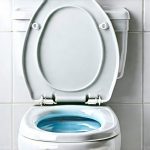Poor hygiene is often associated with infections, but typically those are skin-related or gastrointestinal in nature. The question of whether poor hygiene can directly cause a bladder infection (cystitis) is more complex than many realize. While it’s not usually the primary driver of these infections, there’s a surprising and often overlooked connection between personal cleanliness habits and susceptibility to developing one. Understanding this link requires moving beyond simply “being dirty” and delving into how bacteria – particularly E. coli – travel from areas of potential contamination to the urinary tract. It’s important to note that bladder infections are overwhelmingly caused by bacterial entry, but hygiene practices can significantly influence the likelihood of that happening.
The vast majority of bladder infections originate from bacteria found in the digestive system, specifically Escherichia coli (E. coli). These bacteria normally reside harmlessly within the gut, but they can migrate to the perineal area (the space between the genitals and anus) through fecal contamination. From there, they can travel a relatively short distance into the urethra – the tube that carries urine from the bladder out of the body – and subsequently infect the bladder itself. This is where hygiene comes into play. Practices that promote the spread of bacteria from the intestinal area to the urinary tract increase the risk of infection. Conversely, good hygiene minimizes this transfer, reducing the likelihood of developing cystitis. It’s rarely about a lack of general cleanliness; it’s more about specific habits around toileting and personal care.
The Role of Hygiene in Bladder Infection Development
The connection between hygiene and bladder infections isn’t always straightforward. Many factors influence susceptibility, including anatomy, immune system strength, hydration levels, and sexual activity. However, several hygiene-related practices can contribute to an increased risk. Improper wiping techniques after using the toilet are a major culprit. Wiping from back to front introduces bacteria from the anal region towards the urethra, effectively delivering potential pathogens directly to their entry point. This is particularly relevant for individuals with female anatomy due to the shorter urethral length and proximity to the anus. Furthermore, neglecting regular handwashing – especially after using the toilet or changing diapers – can also contribute to bacterial spread. It’s not about being “unclean” in a general sense, but rather failing to interrupt the pathway of E. coli from its source to the urinary tract. If you experience recurring infections, it may be worth exploring if can poor sleep cause bladder instability is a contributing factor.
Beyond toileting habits, other hygiene practices can play a role. Using harsh soaps or douches in the perineal area disrupts the natural bacterial balance, potentially making it easier for harmful bacteria like E. coli to colonize and invade. Similarly, tight-fitting clothing traps moisture, creating a breeding ground for bacteria. Regular changing of underwear and opting for breathable fabrics (like cotton) can help minimize this risk. It’s also important to remember that hygiene isn’t just about cleanliness; it’s about preventing the transfer of harmful microorganisms. Maintaining good personal hygiene is one component of overall preventative care, alongside staying adequately hydrated and supporting a healthy immune system.
Understanding Bacterial Transfer Mechanisms
The journey of E. coli from the gut to the bladder highlights several key transfer mechanisms. Firstly, direct mechanical transfer occurs during wiping after defecation, as mentioned earlier. This is arguably the most significant pathway. Secondly, bacterial migration can happen through sexual activity; while not directly a hygiene issue, it underscores the importance of proper hygiene before and after intercourse. Thirdly, improper hand hygiene allows for cross-contamination – touching contaminated surfaces (like toilet handles or bathroom floors) and then touching oneself introduces bacteria to the perineal area.
- Mechanical Transfer: Wiping back to front is the prime example.
- Sexual Activity: Bacteria can be introduced during intercourse.
- Hand Hygiene: Contaminated hands spread bacteria to sensitive areas.
The urethra’s natural defenses, such as flushing action from urination and protective mechanisms within the urinary tract itself, normally prevent infection. However, when bacterial load is high – due to poor hygiene practices or other factors – these defenses can be overwhelmed, leading to cystitis. It’s a delicate balance between our body’s ability to resist infection and the constant exposure to potential pathogens in our environment. You may also wonder if can a uti cause tingling or numbness is a symptom of your condition.
The Importance of Proper Toileting Hygiene
Proper toileting habits are arguably the most impactful aspect of hygiene related to bladder health. This goes beyond simply using soap and water; it’s about technique and direction. Always wipe from front to back, ensuring no fecal matter comes into contact with the urethra. Avoid douching or using harsh soaps in the perineal area, as these disrupt the natural microbiome. Consider using separate wipes for cleaning after urination versus defecation.
- Wiping Direction: Front to back is crucial.
- Avoid Harsh Chemicals: Douching and strong soaps can be detrimental.
- Separate Wipes: Minimizes cross-contamination.
Furthermore, paying attention to personal hygiene during menstruation is vital. Sanitary products should be changed regularly, and hands washed thoroughly before and after handling them. These practices significantly reduce the risk of introducing bacteria into the urinary tract. Educating individuals about these specific techniques is a crucial step in preventative care. It’s also important to note that sometimes can a full bladder trigger pain in women and make it difficult to identify the source of discomfort.
Hydration and Immune Support: Complementary Factors
While hygiene plays a critical role, it’s important to remember that bladder infections are complex. Adequate hydration helps flush out bacteria from the urinary tract, reducing their ability to adhere and multiply. Drinking sufficient water throughout the day dilutes urine, making it more difficult for bacteria to thrive. A strong immune system is also essential for fighting off infection. Maintaining a healthy lifestyle – including a balanced diet, regular exercise, and adequate sleep – strengthens the body’s natural defenses.
- Hydration: Dilutes urine and flushes out bacteria.
- Immune Support: Strengthens the body’s defense mechanisms.
- Lifestyle Factors: Diet, exercise, and sleep all contribute to immune health.
In conclusion, while poor hygiene isn’t always the direct cause of a bladder infection, it can significantly increase susceptibility by facilitating bacterial transfer from the gut to the urinary tract. Focusing on proper toileting habits, handwashing, and avoiding harsh chemicals in the perineal area are essential preventative measures. These practices, combined with adequate hydration and a strong immune system, contribute to overall urinary health and reduce the risk of developing cystitis. It’s about understanding the pathways of infection and taking proactive steps to minimize exposure.





















